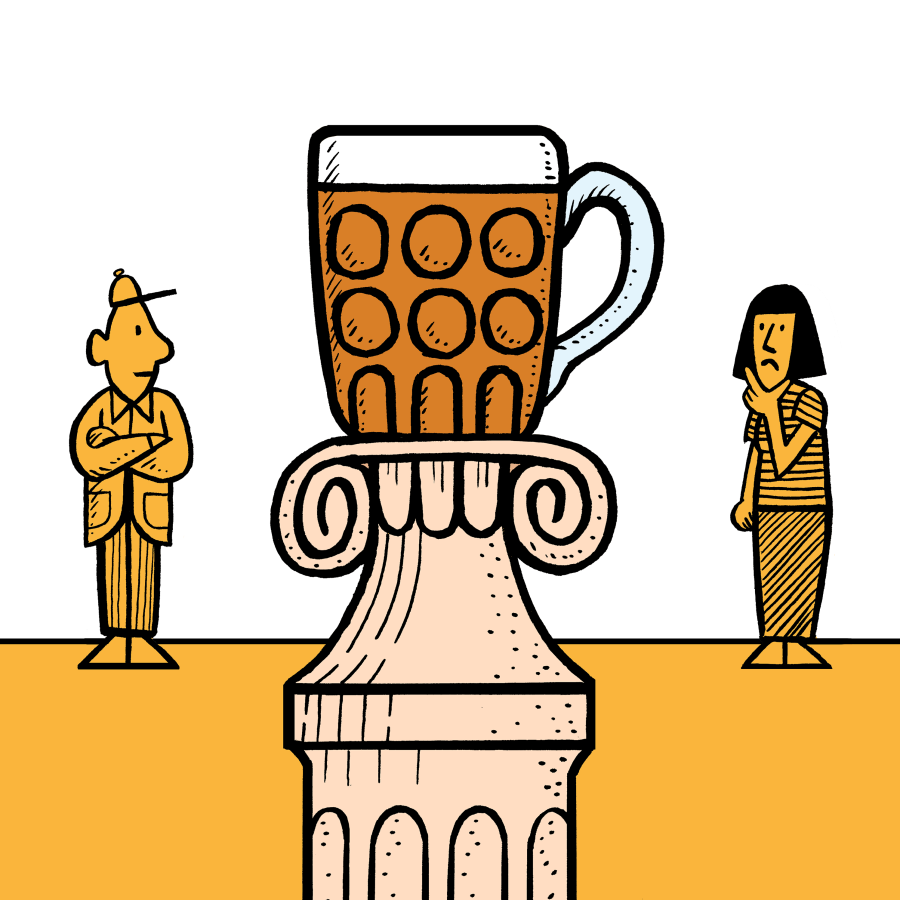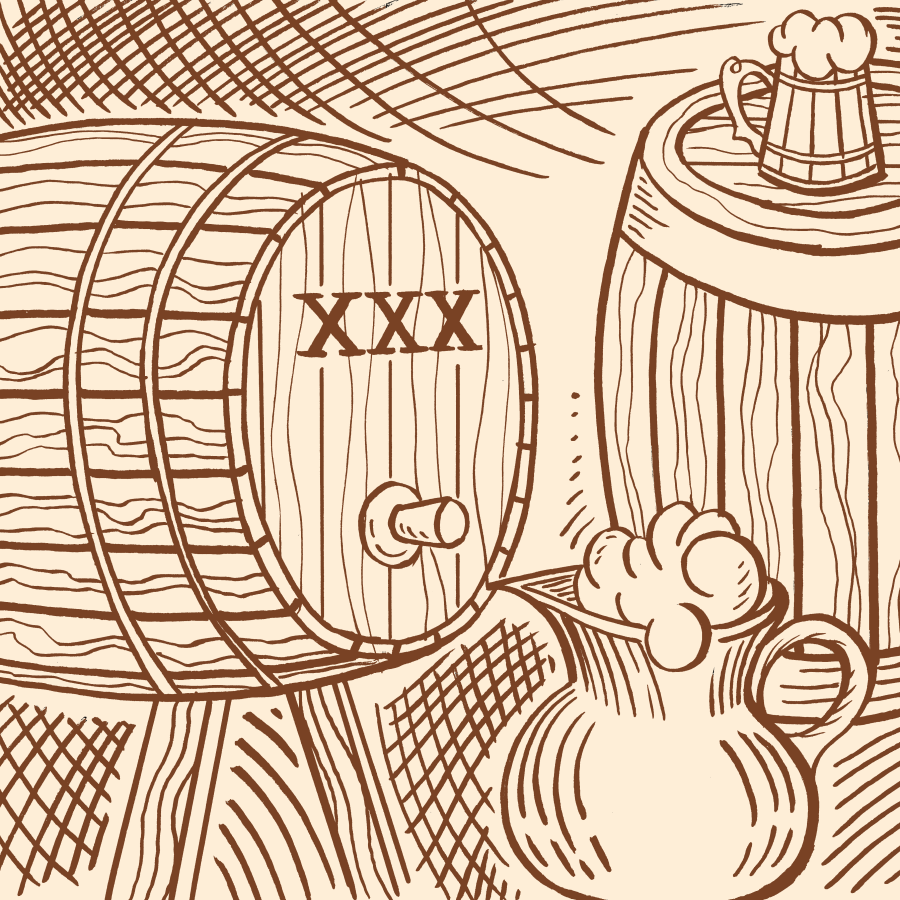It is useful to know the technical intricacies of our favourite drinks, to be well educated on the vocabulary and methods that form it. It is also useful, I think, to take the time to understand why our drinks are drunk in the way that they are and by the people they are, what perceptions people may have about them and how to break away from that.
Cask is rich in tradition and heritage, no other drink quite expresses British beer history in the way that it does, but whose tradition and whose heritage? And how does this affect the way that cask is perceived today? As with all good investigations, the best place to start is the beginning.
Illustrations by David Bailey


With the rise of the craft beer scene it seems you can’t move for choice whenever you enter a well curated bar. Twenty lines tend to have twenty different styles, ABVs and price points, there’s an option for everyone. But it wasn’t always this way. So what did the beginnings of cask beer look like?
You will be forgiven for assuming that cask beer has existed since the very first instances of British brewing began, but that is not quite the case. It’s a nice story to tell, that beer has always been cask conditioned and hand pulled until the invention of these pesky kegs and cans, but whilst beer is a natural product, the nature of casks themselves are not and it took a little longer for them to come into being and you can read more about the history of beer dispensary here.
Whilst beer may have existed in casks, cask-conditioning as we know it today is the result of years of innovation and industrial evolution. As breweries and public houses began to establish themselves in Britain, beer tended to be drunk as soon as it finished fermenting, it wouldn’t keep particularly well and the customers were there and willing to drink the barrels dry. Casks may have continued their fermentation, but chances are this was accidental and it is only since the 19th century that this secondary fermentation has been harnessed in the cellaring of live beer. As the stabilising effects of hops were discovered and scientific advancements were made by Louis Pasteur, beers could last a little longer and brewers could start to figure out how time and storage affected different beer styles. Beer is often said to have four ingredients—water, malt, hops, yeast—but now it is better understood, time plays just as important a role in the final flavour of some of our beers. But what styles of beers were originally made in casks?
“Mild was originally an adjective that could be applied to a variety of styles, but by the 1870s it meant a brewery’s basic draught ale, designed to be drunk young with a minimum of hops and relatively low in alcohol,” writes Des De Moor for CAMRA’s What’s Brewing publication. “It was soon joined at the bar by cask versions of pale ale, made with similar methods but with a little more hops and therefore dubbed bitter by drinkers, prompting brewers to underline the contrast by darkening their milds. Cask versions of older styles were also brewed, including porters, stouts and dark amber Burton ales.”
A lot of these styles mentioned by De Moor here—mild, porters, cosy amber ales—now speak to more historical eras of brewing, providing comfort amongst the novelty of white chocolate banana forest fruit crumble sours and experimentally hopped IPAs. But if those were the beers pouring when ideas and techniques around cask were forming, who were the people drinking them?

Become a CAMRA member today for unlimited free access plus many other membership benefits. Find out more